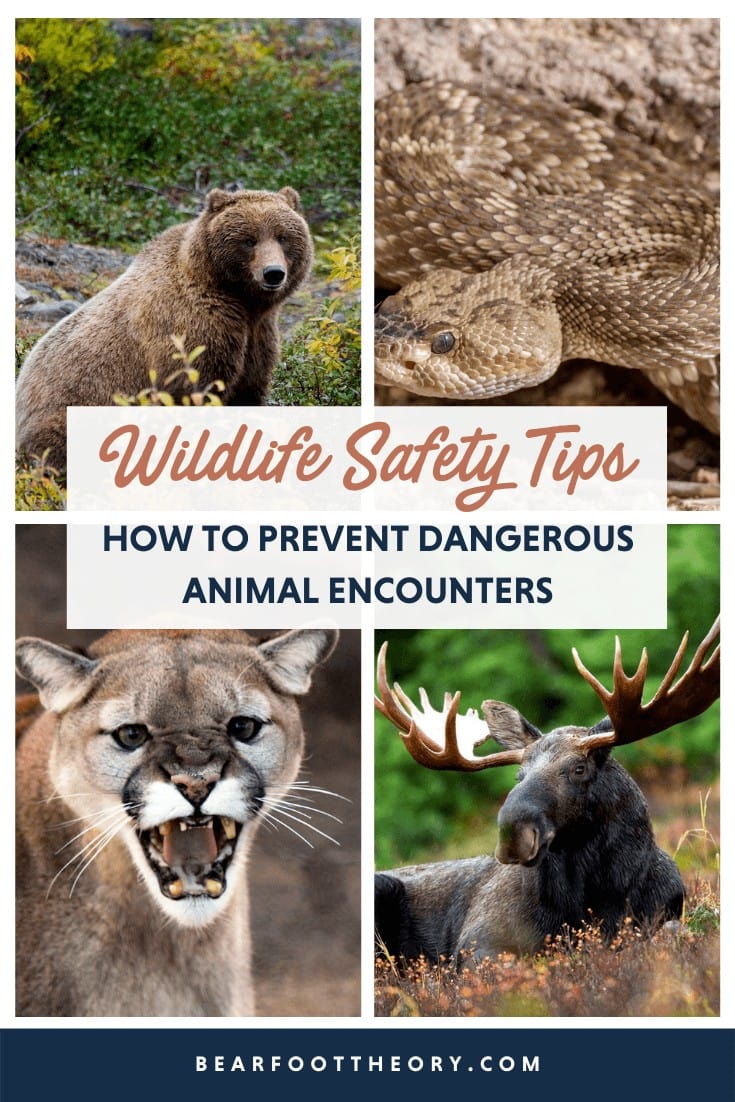Wildlife Safety Tips & How to Prevent Dangerous Encounters
Learn basic wildlife safety tips & what to do if you see an animal on the trail.
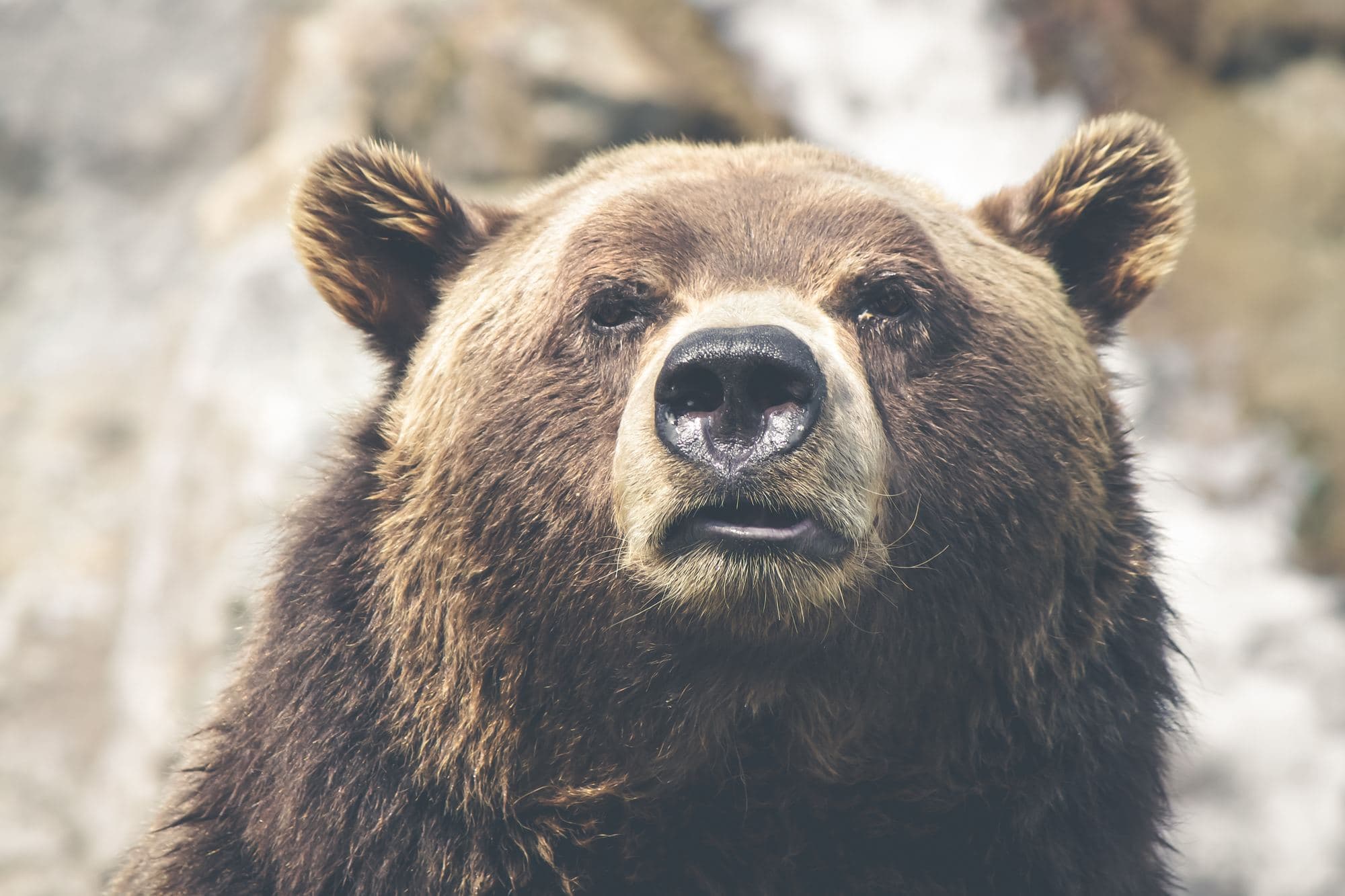
Everyone loves seeing wildlife from the car: bears and moose in Alaska, bison in Yellowstone. The potential to experience wildlife is often what draws people to these destinations year after year. But what about encountering wildlife on the trail? For some, this is what lures people into the backcountry. For others, the fear of encountering wildlife while hiking is a common outdoor fear that stops us at the pavement.
One of our main goals here at Bearfoot Theory is to give you the skills and confidence you need to push yourself in the outdoors. In this blog post, we share a number of helpful wildlife safety tips when it comes to preventing dangerous encounters and dealing with animals you might come across on the trail, whether it is bears, snakes, moose, or the elusive mountain lion.
And as a caveat, these wildlife safety tips aren’t fool-proof and they aren’t based on my own personal experience, as I haven’t had any seriously dangerous wildlife encounters. The advice in this post is based on research and what I’ve learned talking with rangers. When you are traveling to an unfamiliar region, you should do your own research and ask local rangers questions about wildlife before you hit the trail. Being smart is the first step to staying safe.
Here are the essential wildlife safety tips we’ve learned including what to do if you see a bear, snake, mountain lion, or moose while out hiking.
This post may contain affiliate links.
Basic Wildlife Safety Tips
- Most wildlife naturally wants to avoid humans.
- If you come across wildlife, remain calm.
- Always walk, don’t run. Running away from wildlife screams “prey.” You could also trip and injure yourself if you take off running in a panic.
- Before heading out, educate yourself on the types of wildlife that may be present in the region so you know what to be aware of.
- As you explore, watch for animal tracks and droppings on the trail so you can assess what types of animals might be near the trail. You can pick up an animal tracks guide if you are interested in learning more.
- Let a ranger or local agency know of your sighting.
- Get a pair of hiking binoculars to observe wildlife from a safe distance.
Save this post!
Enter your email & I'll send this post to your inbox! You'll also receive my weekly newsletter full of helpful advice for planning your adventures.
Bear Encounters
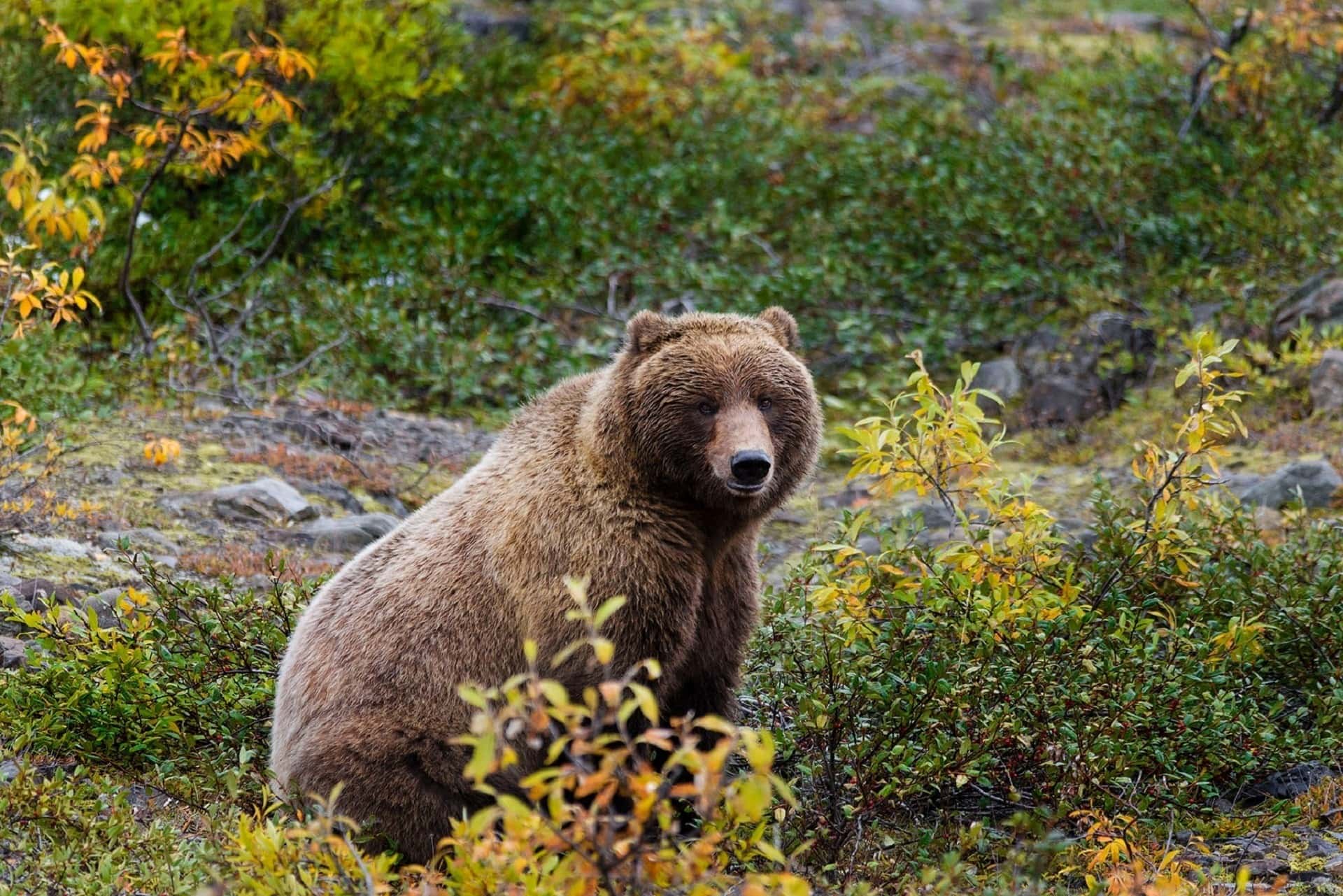
Where You’ll Find Bears
Grizzly bears are generally found in Alaska, Western Canada, and in the northwestern U.S. including Montana, Wyoming, Idaho, and Washington. Black bears (which can also be brown in color) are found across the U.S. primarily in Canada, Alaska, the Pacific North West, the Appalachian Mountains, the Rocky Mountains, the Sierra Nevada, along the west coast, and in the north eastern U.S.
How to Prevent Bear Encounters
The worse thing you can do is surprise a bear as you come around the corner on a trail. The easiest way to prevent that? Make lots of noise. You may feel silly but talking loud, singing, clapping, and yelling “hey bear” as you round blind corners is a good way to scare a bear off before you get close. Leave the headphones in the car, so you can hear a bear rummaging around in the bushes. Ideally, you want to hike in a group, but if you do choose to hike solo, making enough noise to warn a nearby bear of your presence is even more important. You can also tie a bear bell to your backpack, but I was warned by rangers in Canada, that bear bells are much less effective than the sound of your voice.
If you are hiking in grizzly country (Canada, Alaska, Montana, Wyoming), it’s also recommended that you carry Counter Assault Bear Spray. Read up before you hit the trail on how to use it, and keep your bear spray somewhere that is easy to grab quick, like the water bottle pocket of your backpack. It’s unlikely that you’ll ever have to use it, but having it will give you more confidence and an added safety net in case a grizzly approaches you. Keep in mind that flying with bear spray even in your checked luggage is not allowed, but if you are traveling in grizzly country, it should be easy to find in your destination. Also, check regulations in your destination. In Yosemite National Park, for instance, bear spray is actually illegal to possess.
If you are in black bear or grizzly bear country, make sure you are following proper food storage guidelines to reduce the potential for wildlife encounters with bears:
- Research the area you’ll be camping to see if bear boxes are provided at designated campsites.
- If you will be camping in the wilderness where bears are common, outside of a designated campsite, you’ll need to pack and store all food in a bear resistant canister. In some areas, hanging your food is acceptable (check local regulations) but has generally proven to be less effective than bear resistant canisters.
- Make sure you store trash and all personal hygiene products in bear boxes or bear-resistant canisters as well.
- Cook food and wash dishes downwind from your campsite to eliminate odors near your tent.
- Practicing Leave No Trace principles will greatly help with reducing wildlife encounters with bears.
What to Do If You See a Bear
The first wildlife safety tip if you see a bear is to stay calm and if you are traveling in a group, come together to make yourselves seem large, and leave your backpacks on. If the bear has not seen you, slowly back away from the bear, and talk calmly to alert the bear of your presence. Give the bear plenty of room and keep your eyes glued on it. Try to figure out if it’s a grizzly or a black bear. It’s commonly thought that grizzlies are brown and black bears are black, but that’s actually not true. Either species can be brown or black, so color isn’t the best indicator. Instead, look to see if the bear has a visible hump on its neck. If so, it’s a grizzly.
If the bear sees and starts to approach you or displays aggressive behavior like slapping the ground with its paw or snorting, get your bear spray out and remove the safety lock. Continue to slowly back away, talk to the bear calmly, and quickly get as far away as you can from the bear without running.
What to Do If You’re Attacked by a Bear
It’s very rare that a black bear would attack, but in the case that you are approached or attacked by a black bear, you will want to fight back. Use any object that you can get your hands on and go for the bear’s face.
If you’re being attacked, it’s more likely that you are dealing with a grizzly. Your first line of defense is your bear spray. According to the Counter Assault website, they recommend using short 1-2 second bursts. Your bear spray can only travel up to 25 feet for a total of 7 seconds. So use your bear spray only when necessary. Aim just below the head, so when the bear gets lower to charge, it will run through the cloud of bear spray, deterring the bear from the attack. This is your chance to get away, but remember, move away slowly so you don’t look like prey.

If the bear has made contact, your next step is to play dead. Use your hands to protect the back of your neck. Lay down on your stomach and spread your legs wide, which will help stop the bear from turning you over onto your back.
In the worse case (and unlikely) scenario that the bear starts biting you, you need to fight back like hell.
Snake Encounters
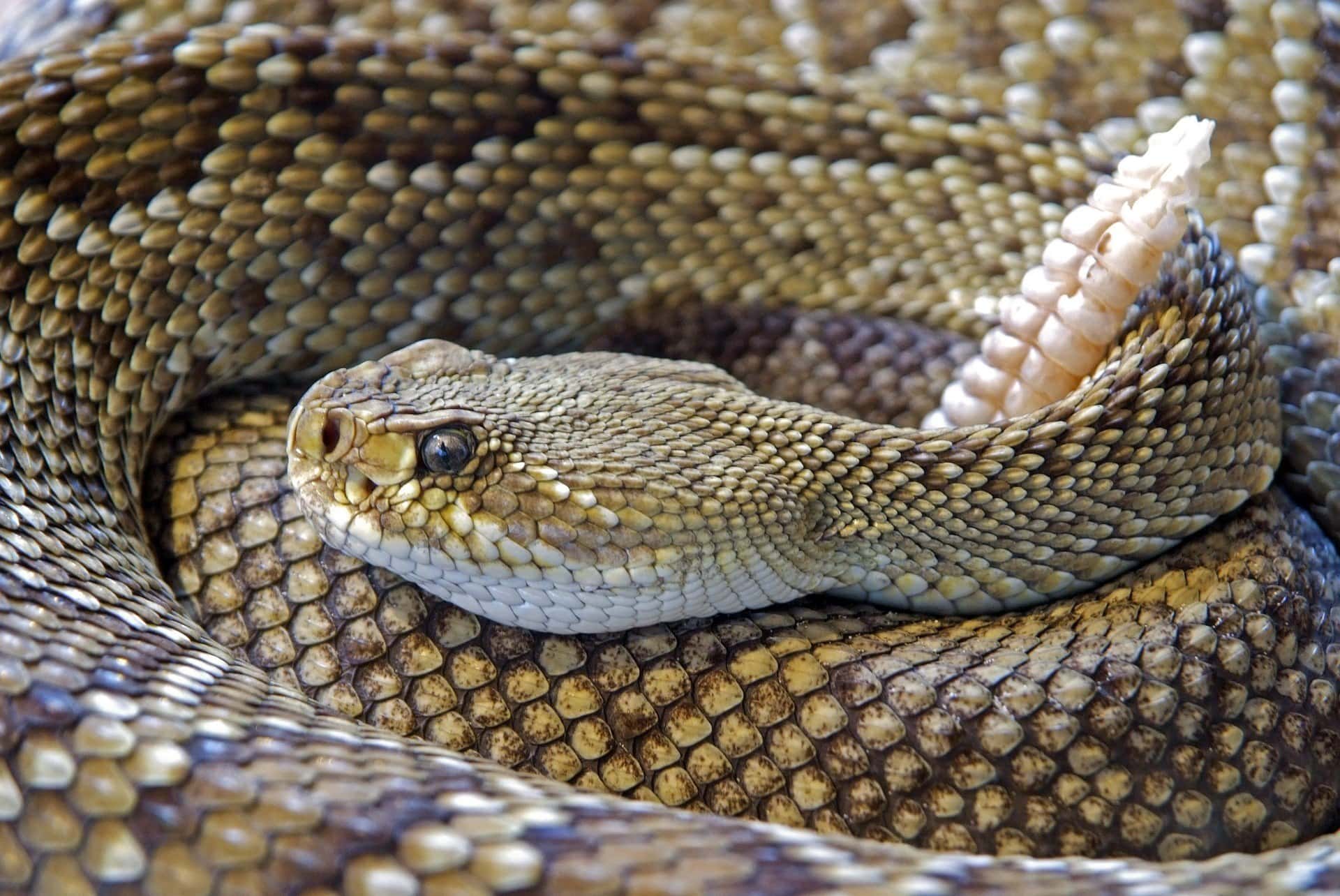
Where You’ll Find Snakes
Snakes can be found throughout the U.S., but most species are harmless. The snakes you absolutely want to avoid are rattlesnakes, copperheads, coral snakes, and cottonmouth snakes (also known as water moccasins).
How to Prevent Snake Encounters
When Bearfoot Theory community member Kim hiked the Pacific Crest Trail, snakes were her biggest fear. Luckily, rattlesnakes which are what you have to watch out for most in the West, make noise to alert you of their presence, so if you like to hike with headphones like Kim did on the PCT, we suggest keeping only one earpiece in and the volume to a minimum so you can hear any rattling or other warning sounds on the trail.
The best wildlife safety tip for snakes is to keep an eye on the trail up ahead so you can stop in advance if you see one and give it time to move off the trail. Hiking with trekking poles is another good way to avoid snake encounters since you can hit the ground with your trekking poles first and your feet second.
Snake encounters are a risk not just for hikers, but for climbers as well, as snakes like to live in little cracks on big walls. So it’s important to watch where you step while hiking and where you reach when climbing.
What to Do If You See a Snake
If you come across a rattlesnake, keep your distance, they can strike a distance of half their own length. Keep in mind when they are coiled up you often can’t see their full length so STAY BACK. If you hear a rattle, STOP. Then locate the snake visually and back away from the snake to give it the opportunity to move along. Among all the wildlife encounters possible, snakes generally are ones to give a fairly loud warning to unwelcome visitors.
What to Do If You’re Bitten By a Snake
If you do get bit by a snake, your first step is to get a good look to see if you can identify the snake. This will be helpful when you seek medical attention. Next, see if the skin has been broken. If so, stay calm. You want to keep your heart rate down. Studies show that neither a tourniquet or the venom kits that you can supposedly use to pull the venom out work. If the bite is on your arm or hand, do not elevate it. Instead, try to immobilize it and hike out to where you have phone reception and call 911 or go to the nearest hospital to receive anti-venom.
If you are backpacking and days from the trailhead, your best bet is to stay stationary and call for help using an emergency communication device, like a Garmin InReach. This allows you to send an SOS signal and even communicate with emergency responders via custom text message so they know what they are dealing with.
Mountain Lion Encounters
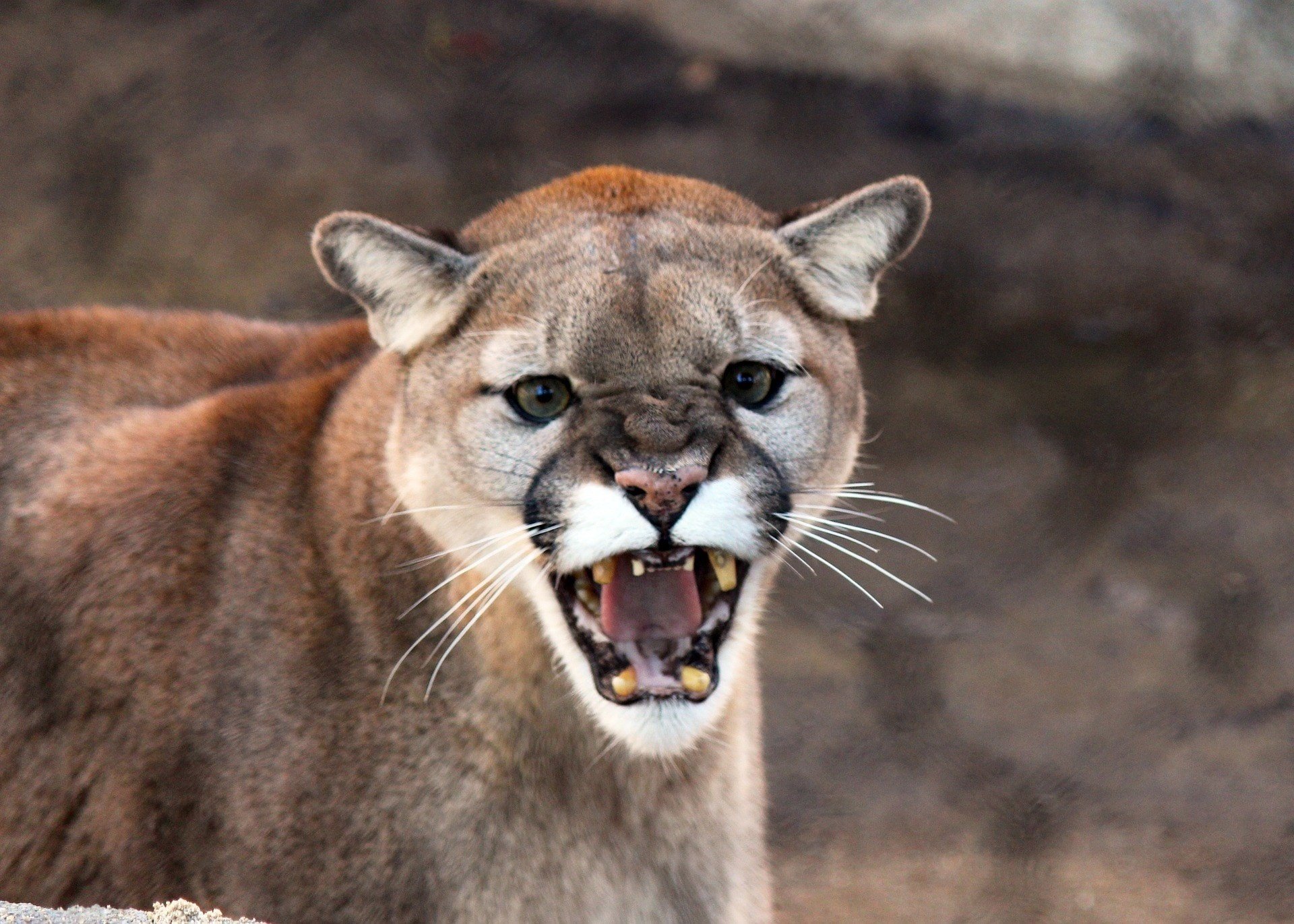
Where You’ll Find Mountain Lions
Mountain lions can mainly be found in the Western United States and Canada with a small population in Florida.
How to Prevent Mountain Lion & Cougar Encounters
Like for bears, our top wildlife safety tip for mountain lion encounters is that noise is your best friend in keeping them away. Hike with a friend or a small group if possible, and keep your eye out for cougar tracks, fresh poop, and claw marks on trees. If you see these things, it’s an indication that a cougar lives in the area. If you are hiking with pets, keep them on a leash and consider heading back to your car. Smaller children should also stay close to their parents.
What to Do If You See a Mountain Lion
It’s pretty rare that you’ll encounter a cougar or mountain lion in the wild as they are rather elusive and rarely make themselves known to humans, but it’s definitely not improbable. Dealing with big cats is similar to bears in that you should be loud and appear as big as you can. And remember, don’t run. If you are in a group, stand together to make yourselves appear larger. Make sure the cat doesn’t feel trapped and has a way to move away from you. Make lots of noise and maintain eye contact with the cat. If you have kids, put them in the middle of the group.
What to Do If You Are Attacked by a Mountain Lion
Maintaining eye contact with a big cat is essential. Act aggressive to make sure the cougar doesn’t mistake you for prey. Make as much noise as possible, play loud music on your phone, and do what you can to scare it off. If it isn’t backing down, throw stones or branches aiming for its eyes and head and fight back like hell.
Moose Encounters
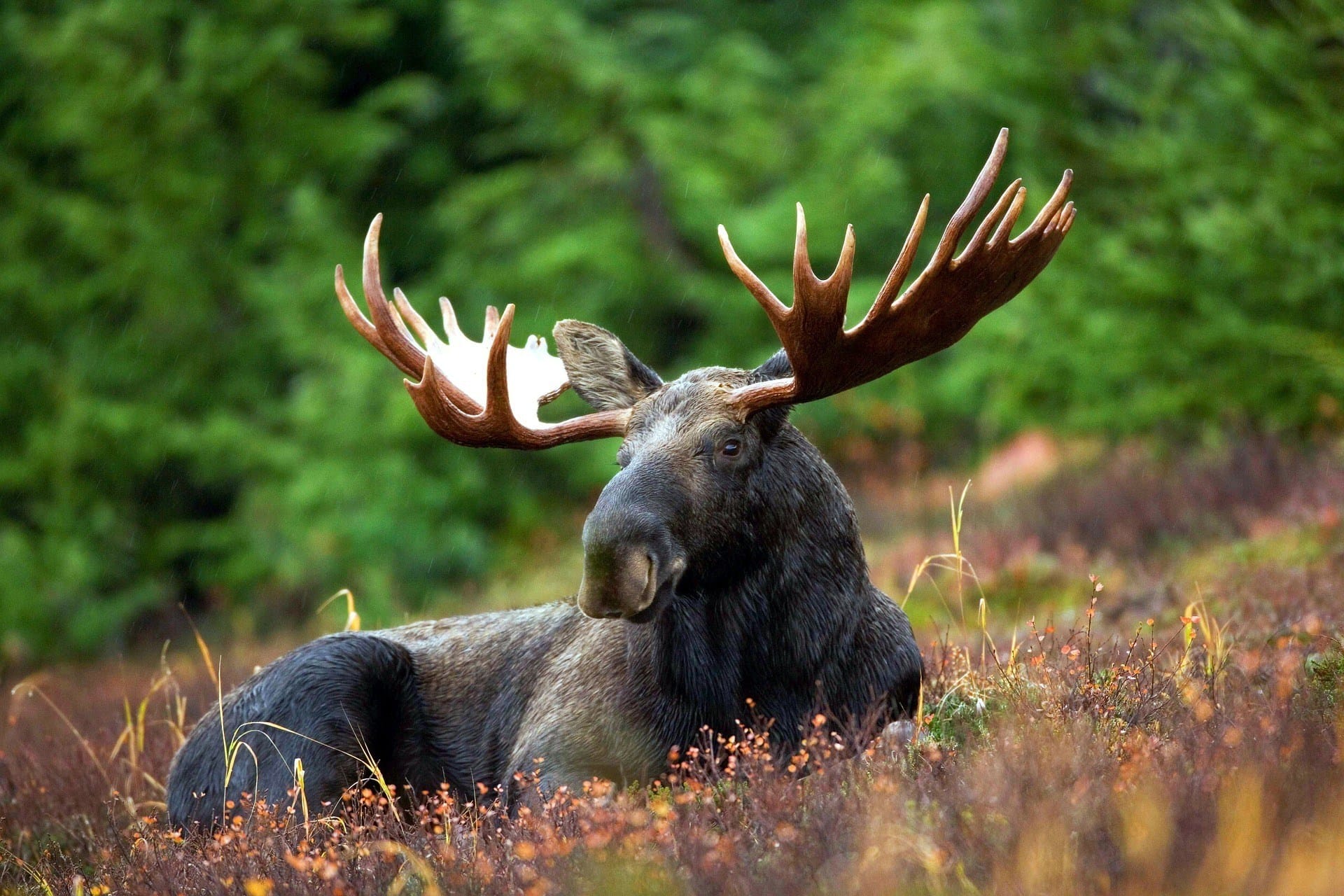
Where You’ll Find Moose
Moose can be found in Canada, Alaska, Colorado, Idaho, Maine, Minnesota, Montana, New Hampshire, New York, North Dakota, Utah, Vermont, Washington, Wisconsin, Michigan, and Wyoming.
How to Prevent Moose Encounters
Moose are big, very big. Generally, you’ll see them before they see you. Be aware of your surroundings and keep an eye out for moose and other wildlife, especially if you know you’re in an area where they can be present.
What to Do if You See a Moose
You might not find a moose that threatening, but more people are injured each year by moose than bears. The average moose can weigh well over 1,000 pounds and mothers are known for being incredibly protective. If you see a moose, it’s important to give them plenty of room so they don’t become aggressive. Keep your distance while making noise to ensure the moose is aware of your location. Keep your pets close and quiet, and allow the moose to move freely.
Watch for signs of aggression: ears back, hair raised, grunting, stomping.
What to Do If You’re Attacked by a Moose
If a moose is agitated or charging you, moose are the one animal that we would recommend you run away from as quickly as possible. Climb a tree or hide behind a wall, tree, rock, or anything you can put between you and the moose.
If the moose knocks you to the ground and starts stomping on you, play dead. Curl up in a ball, protect your head and don’t move until the moose is far enough away that you can run somewhere safe.
We hope this post gives you some helpful wildlife safety tips on what to do in case you encounter wildlife on the trail.
Have you encountered any wildlife like this on the trail? What did you do? Share your tips, experiences, and questions in the comments below.

